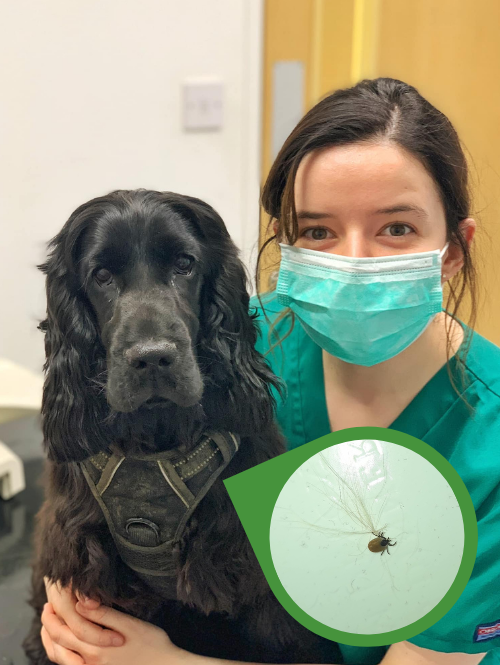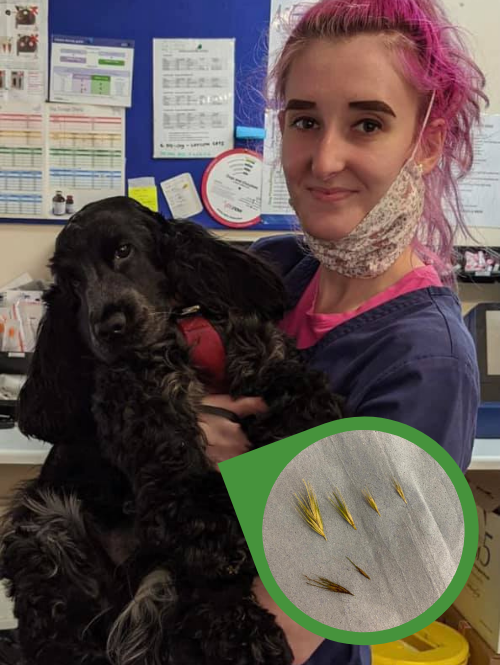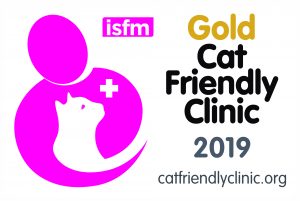With Summer just around the corner and warmer days ahead, we are going to be able to enjoy longer days, warmer climates, new adventures and outdoor socialising.
With your pets in tow, this can be made even more enjoyable! However, when the temperatures rise, the dangers to our pets increase too. To keep pets safe, you should be aware of potential hazards, as well as some top tips to help keep your pets safe from endangering themselves throughout the summer months.
Heatstroke and dehydration
Unlike humans, dogs do not sweat from their skin and instead rely on panting to reduce their body temperature. On hot days, if panting is not enough to maintain a normal temperature, dogs can quickly overheat and be at risk of developing Heatstroke. Heatstroke occurs when the body’s temperature rises above its normal levels and therefore cannot accommodate any additional heat.
Some of the key symptoms to watch out for are:
🔸 Heavy panting
🔸 Faster panting
🔸 Reluctance to exercise
🔸 Staggering or collapse
🔸 Drooling a lot more than normal
🔸 A confused or dazed face, or glassy eyes.
🔸 Vomiting
🔸 Seizures or unconsciousness
To keep your dog hydrated and to reduce the risk of heatstroke, your pet should have access to clean, fresh drinking water. You should avoid exercising your dog during the hottest part of the day and try and get out early morning or late evening. If you are out with your dog for the day, you should carry a portable drinking bottle or bowl which is easily accessible and dispensed as required. Especially being aware that in the brachycephalic (‘squashed face’) breeds such as pugs, bulldogs and boxers, heatstroke is very common.
If you do think that your dog is dehydrated, or is demonstrating one or more of the symptoms listed above, cool them down with a hose, or place a cool, damp towel over them and call us as soon as possible for advice.
BBQs and outdoor cooking
Cooking up a bbq and having loved ones over is a great way to enjoy your weekends and evenings. However, for your pet there are many things to be mindful of including hazardous foods, toxic drinks, and scalding surfaces.
Some food and drinks which should be kept out of reach of your pet include:
🔸 Food with bones
🔸 Food with seeds
🔸 Grapes
🔸 Raisins
🔸 Corn on the cob
🔸 Chocolate
🔸 Beer
🔸 Wine
🔸 Coffee/coffee beans
🔸 Teas/tea bags
Last month, Monty came in as he had his owners worried after he had eaten a corn on the cob. He was rushed to our 24 Hour Surgery at our main hospital at Streatham Hill.
Monty was admitted for hospitalisation and x-rays. Due to the high risk of a gastrointestinal blockage, it was decided the safest thing to do was to surgically remove the corn on the cob via an emergency exploratory-laporatomy.

Bee or wasp stings
As humans, we fret around the buzzing noise when a bee comes close, however, an inquisitive pet may seek to investigate, and as a result, could get stung. Commonly, most stings will cause your pet some irritation and some pain. Depending on where your pet has been stung, and if they have been stung before, there can be a lot of swelling and they may continually scratch the stung area, which can result in fur loss. Most commonly a cat may have a swollen paw and a dog may have a swollen mouth, which can result in breathing difficulties.
If your pet shows any of the following symptoms, they could have been stung:
🔸 Drooling
🔸 Whining
🔸 Swelling
🔸 Pawing at the face, or mouth
🔸 Biting at the site of the sting
🔸 Hives
If they have been stung near their mouth or nose, you should contact us straight away, as this could potentially be a medical emergency.
Ticks
As we spend more time outside with our pets they will become more prone to picking up ticks. Commonly found in woodland or grassland. ticks are small parasites, which suck blood from other animals and have an egg-shaped body, which expands and becomes darker when they are filled with blood.
If you do discover a tick and are confident to do so, you should remove it straight away. You should avoid squeezing the body or leaving the head in your pet. Removing a tick can be done using a tick removal tool. If you are not sure how to remove a tick, please call us and we can assist as we did for the gorgeous, Cisco.
His owners brought him in today after finding a tick he had picked up. The tick was safely removed from his skin.

Getting in the habit of checking your dog for ticks after a walk is a great way to keep them safe. You can do this by moving your hands over them to check for any unusual small bumps, particularly around areas including:
🔸 Ears
🔸 Head
🔸 Neck
🔸 Groin
🔸 Armpits
🔸 Feet
Ticks vary in size, but you should be able to see their oval-shaped body, which will get bigger as it fills with blood. Ticks are most active in the summer and autumn months.
Depending on where you live, tick protection might be recommended in the warmer months, or all year around.
Sea, rivers, lakes and swimming pools
For many dogs, a pool, river, or lake may look inviting when the temperatures are high, however, it’s important to remember that not all dogs can swim, or even like the water. If you are introducing your dog to water, we would advise initially trying a shallow children’s paddling pool. If they enjoy that, you could introduce them to wider, deeper waters – however, we suggest using a dog-specific flotation device for their safety. If you are near water with a current or tide, please be wary. Even if your dog is a strong swimmer, they could quickly find themselves in trouble, especially if they are swimming against a tide.
Keep a lookout for blue-green algae and associated warning signs, as this is often poisonous for dogs. Don’t let your dog swim or drink water that you suspect is containment. You should contact us straight away if your dog has come into contact.
If your dog does enjoy swimming, after they have played in the water you should ensure they are always thoroughly rinsed, to wash away salt, chlorine, and harmful bacteria.
Walking on hot pavements and artificial grass
When walkways and pavements heat up in the sun, they can burn your pet’s paws. Your pet’s paws are just as sensitive as the bottom of our feet, so if it is unbearable for you to touch, then it will be for your pet to walk on. We would advise trying the seven-second rule; if you can place the back of your hand on the surface for seven seconds or more, then your pet should be able to withstand the temperature of the surface. If you cannot, then it’s too hot for your dog to walk on.
To prevent your dog from burning its paws, you should follow the measures listed below:
🔸 Walking them in the cooler hours of the day – early morning or late evening
🔸 If you are out in the midday heat, try and walk them on the grass where possible
🔸 Clean and check your dog’s paws regularly
Fertiliser and pesticides
Most fertilisers contain nitrogen and iron, which will poison your pet, and cause severe stomach problems which can cause irritation. Pesticides can cause your pet to have tremors and seizures.
If you are not sure if your pet has been exposed to such chemicals, but your pet is showing one of the following symptoms please call us and we can provide the appropriate treatment recommendations:
🔸 Diarrhoea
🔸 Difficulty breathing
🔸 Vomiting
🔸 Drooling
🔸 Nausea
🔸 Dark, muddy coloured gums
🔸 Unusual posture due to abdominal pain.
🔸 Seizures
🔸 Tremors
Grass Seeds, Flowers and Plants
Many plants and flowers are poisonous for our pets. If your pet consumes a poisonous plant, depending on how much and their level of toxicity, they may become quite unwell. Below is a shortlist of just some of the plants which can be hazardous to our pets that grow in the summer months:
🔸 Elder: The whole plant, including the elderberries, are poisonous for both cats and dogs.
🔸 Grass Seeds: Grass seeds are a common problem, particularly during the summer months. They are attached to the tops of long grass stems and can easily brush off onto your dog during walks. Although tiny, they have the potential to cause real pain to your dog. The seeds have pointy ends and are very sharp so they easily become trapped in a dog’s fur and can burrow down the coat to pierce the skin.
🔸 Lilies: Containing a toxin that can cause vomiting, diarrhoea, collapsing, fits and heart problems, and renal failure in cats. Lily flowers and leaves are also often used in flower bouquets and are very poisonous to both dogs and cats.
🔸 Foxglove: Both the seeds and the leaves of a foxglove plant contain a toxin that can cause your pet to have heart problems, sickness, and diarrhoea, fits and collapsing.
🔸 Geranium: The whole geranium plant is poisonous to both dogs and cats.
🔸 Hydrangea: Parts of a hydrangea plant contain cyanide which is toxic to both dogs and cats.
Here is the lovely Phoebe. Phoebe’s concerned owner brought her along to see our vet Mary at The Animal Clinic, as Phoebe started shaking her head and seemed uncomfortable.
As you will see from the photo, the problem(s) are clear! These were all removed from Phoebe’s paws and one of her ears!
Luckily we can say, she is feeling much better now
During grass seed season, we would suggest avoiding exercise in long grass if possible and routinely checking your dog’s ears/paws after every walk.

Please remember that we are always here for you and your cherished pets. With 24 Hour Vetcare, you can have peace of mind that we are here for you whenever you need us. We hope that you won’t need to visit for an emergency, but if you do, our wonderful Vets will be ready and waiting to help your pets.
If possible, please give us a call in advance on- 0208 674 3525 so that we can prepare for your arrival.
Don’t forget, you can still book regular appointments online.
Search Blog Articles
Blog Categories
- Advice From Your Vets (118)
- Kittens (6)
- Pet Healthcare (26)
- Puppies (17)
- Seasonal Tips (10)
- VIP Healthcare Plans (8)
- Covid-19 News (15)
- Weekly News (63)
Like Us On Facebook
Recent Posts
Archives
- May 2024
- October 2023
- July 2023
- June 2023
- March 2023
- December 2022
- September 2022
- April 2022
- December 2021
- November 2021
- October 2021
- September 2021
- August 2021
- July 2021
- June 2021
- May 2021
- April 2021
- March 2021
- February 2021
- January 2021
- December 2020
- November 2020
- October 2020
- September 2020
- August 2020
- July 2020
- June 2020
- May 2020
- April 2020
- March 2020
- February 2020
- January 2020
- December 2019
- November 2019
- October 2019
- September 2019
- August 2019
- July 2019
- June 2019
Join our surgery by registering your pet online Register now
What Our Clients Say
Jack Billing
Byron Watson
Sharon And Michael
Amanda
Miss M And Dusty




